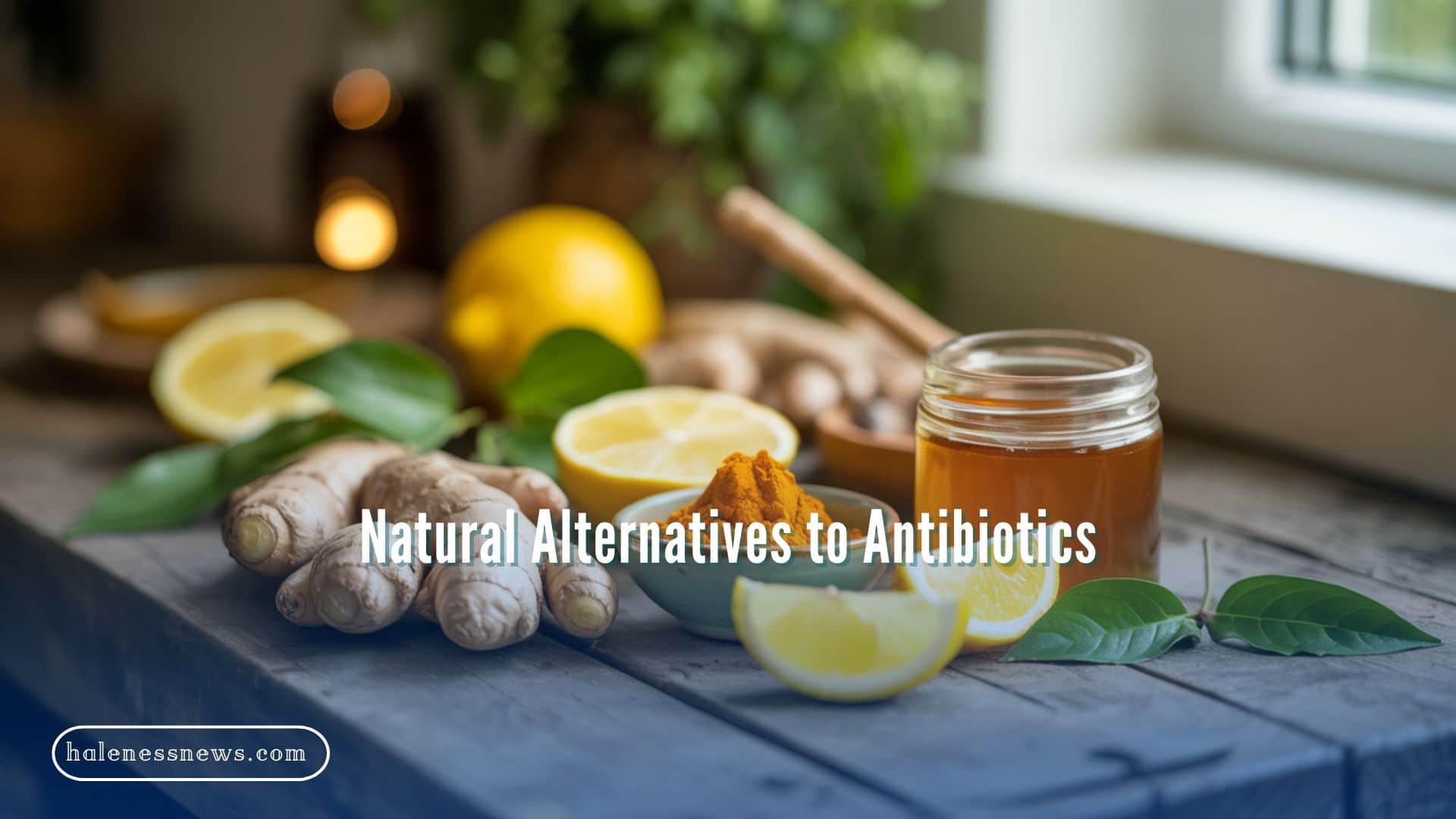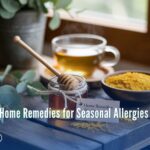In a time when antibiotic resistance is rising and concerns about overuse of pharmaceuticals are growing, many people across the United States are exploring natural alternatives to antibiotics. These remedies, rooted in ancient traditions and modern science alike, offer immune support, infection prevention, and sometimes even antimicrobial action — without the harsh side effects of synthetic drugs.
But are natural alternatives truly effective? Which ones are safe? And how can you use them responsibly?
In this article, we’ll explore everything you need to know — from time-tested herbal remedies to scientifically-supported natural compounds — using easy language and a professional tone that balances fact with practicality.
Why Look for Natural Alternatives?
Rising Antibiotic Resistance in the U.S: According to the Centers for Disease Control and Prevention (CDC), over 2.8 million antibiotic-resistant infections occur each year in the United States, leading to more than 35,000 deaths. This is a growing public health crisis.
Overprescription and misuse of antibiotics contribute heavily to this problem. As more bacteria evolve to resist synthetic antibiotics, our medical arsenal becomes weaker — which is why natural alternatives and preventive strategies are becoming more important than ever.
How Do Natural Antibiotics Work?
Natural antibiotics contain bioactive compounds with antibacterial, antiviral, antifungal, or anti-inflammatory properties. These substances can either:
- Inhibit the growth of pathogens
- Kill harmful bacteria
- Boost immune function to help your body fight infection
Let’s take a deeper look at the top options and how they work.
Quick Comparison Table:
| Natural Alternative | Key Benefit | Target Pathogens | Best Form | Precautions |
|---|---|---|---|---|
| Garlic (Allicin) | Antibacterial, antifungal | E. coli, Staph, Candida | Raw, capsules | Avoid high doses before surgery |
| Oregano Oil | Broad-spectrum antimicrobial | Bacteria, viruses, fungi | Diluted oil, capsules | Not for long-term use |
| Honey (Manuka) | Wound healing, antibacterial | Staph, skin infections | Topical, oral | Not for infants under 1 year |
| Ginger | Anti-inflammatory, digestive | Respiratory bugs, stomach bacteria | Tea, fresh | May cause heartburn in high doses |
| Turmeric (Curcumin) | Anti-inflammatory | General immune support | Powder, capsules | Needs black pepper for absorption |
| Echinacea | Immune stimulant | Colds, respiratory infections | Tea, tincture | May cause allergic reaction |
| Clove (Eugenol) | Antibacterial, pain relief | Oral infections | Essential oil, tea | Avoid undiluted oil |
| Goldenseal (Berberine) | Antimicrobial | Bacteria, parasites | Capsules, tincture | Avoid during pregnancy |
1. Garlic: Nature’s Potent Antimicrobial
Garlic has been used for centuries to fight infection. The secret lies in allicin, a sulfur-based compound released when garlic is chopped or crushed. Allicin has shown strong antimicrobial properties against bacteria like Staphylococcus aureus, E. coli, and even certain fungi.
How to Use:
- Raw, freshly crushed garlic is most effective.
- Add to food or consume as a supplement (enteric-coated garlic capsules reduce odor).
Note: Eating raw garlic can irritate your stomach, so start with small amounts.
2. Honey: Healing and Antibacterial
Honey, especially Manuka honey, has powerful antibacterial and wound-healing abilities. It creates a protective barrier over wounds, keeps the area moist, and releases hydrogen peroxide naturally.
It is effective against:
- Skin infections
- Sore throats
- Minor burns and cuts
How to Use:
- Apply directly to wounds or ulcers.
- Mix into tea for throat infections.
3. Oregano Oil: A Natural Powerhouse
Oregano oil is loaded with carvacrol, a compound that can kill certain bacteria, viruses, and fungi. It is especially useful for fighting:
- Digestive infections
- Candida overgrowth
- Respiratory issues
How to Use:
- Use diluted oregano oil in capsules or water.
- Do not apply it undiluted directly to the skin or ingest without proper guidance.
Caution: This oil is highly potent and can irritate your mucous membranes if used improperly.
4. Echinacea: Immune System Enhancer
Echinacea is a flowering plant native to North America, often used to prevent or shorten colds. While its direct antibiotic effect is weaker, it boosts white blood cell activity and supports immune health.
How to Use:
- Drink as tea or take as a tincture or capsule.
- Best used at the first sign of illness.
5. Turmeric: The Golden Anti-Inflammatory
Turmeric’s active ingredient, curcumin, isn’t just an antioxidant—it also shows antibacterial and anti-inflammatory effects. While not a direct antibiotic, it helps reduce inflammation caused by infections and enhances overall immune function.
How to Use:
- Combine with black pepper (piperine) to increase absorption.
- Add to smoothies, golden milk, or take in supplement form.
6. Ginger: Gut-Friendly and Antibacterial
Ginger has long been praised for its role in easing nausea, but it also has antimicrobial properties. It can help fight pathogens in the gut and reduce inflammation in the body.
How to Use:
- Fresh ginger tea or grated ginger in meals.
- Ginger capsules for more concentrated benefits.
7. Goldenseal: The Herbal Antibiotic
Goldenseal contains berberine, a compound that inhibits bacterial growth. It has traditionally been used to treat:
- Respiratory infections
- UTIs
- Digestive tract infections
How to Use:
- Take in capsule, tincture, or tea form.
Important: Not recommended for long-term use or during pregnancy.
8. Clove: Small Spice, Strong Punch
Clove oil contains eugenol, a potent antimicrobial and pain reliever. It’s commonly used for:
- Toothaches
- Oral bacteria
- Fungal infections
How to Use:
- Diluted essential oil applied to gums or skin.
- Use in mouthwash for oral hygiene.
What About Probiotics?
While probiotics are not antibiotics, they help restore the balance of good bacteria in your gut—especially important after antibiotic use. Taking probiotics can:
- Improve digestion
- Reduce risk of yeast overgrowth
- Prevent recurring infections
Best Sources:
- Yogurt, kefir, sauerkraut, kimchi, or probiotic supplements
Situations Where Natural Antibiotics Might Help!
Natural remedies can be helpful in cases of:
- Mild infections (e.g., sore throats, minor cuts)
- Preventative care (especially during cold/flu season)
- Topical infections (fungal rashes, minor wounds)
- Oral health issues (gum inflammation, mouth ulcers)
But remember: serious infections like strep throat, pneumonia, or UTIs often require medical antibiotics. Natural remedies are not substitutes in emergencies.
Are Natural Alternatives Safer?
Generally, natural remedies have fewer side effects than pharmaceuticals. However, this does not mean they are risk-free. Risks include:
- Allergic reactions
- Drug interactions
- Overuse or incorrect use leading to harm
What Does Science Say?
Studies published by institutions like the National Institutes of Health (NIH) and Johns Hopkins University have confirmed the antimicrobial effects of garlic, oregano oil, and honey in lab settings. However, more human clinical trials are needed to confirm their effectiveness in real-world scenarios.
That said, integrating natural remedies into your lifestyle — alongside proper nutrition, rest, and hygiene — can dramatically improve your resilience to infections.
When to See a Doctor?
Always consult a healthcare provider if:
- Symptoms worsen or last longer than a few days
- You have a fever, chest pain, or difficulty breathing
- The infection is spreading or producing pus
- You have a chronic illness or weakened immune system
FAQs
1. Are natural antibiotics as strong as pharmaceutical ones?
Not always. They may be effective for mild infections but are not substitutes for strong antibiotics in serious cases.
2. Can I use these remedies with my prescribed medication?
Some natural alternatives can interact with medications. Always check with your doctor.
3. Is it safe to give natural antibiotics to children?
Some are safe, like honey (for children over 1 year), but consult a pediatrician first.
4. How long should I take a natural antibiotic?
Generally, no more than 7–10 days unless supervised by a healthcare provider.
5. Do these remedies work for viral infections?
Some, like garlic and oregano oil, have antiviral properties — but they mostly support your body’s natural immune response.
6. What’s the best one for daily immune support?
Ginger, turmeric, and garlic are great daily choices with long-term benefits.
Conclusion:
The world of natural alternatives to antibiotics offers promising, science-backed ways to support your health — without over-relying on pharmaceuticals. Whether you’re fighting a mild infection, building your immune system, or simply looking for safer options, these remedies can be incredibly effective when used correctly and responsibly.
Nature doesn’t promise a cure for everything — but it does offer tools we’ve used for thousands of years. With today’s science and wisdom combined, you can make informed, empowered choices for your health.
Latest Post:





